The Dell XPS 13 (9300) Review: Return of the King
by Brett Howse on July 16, 2020 10:00 AM ESTWireless
Dell offers two wireless radio options for the XPS 13, and both are Killer-branded. The default wireless card is the Killer Wi-Fi 6 AX1650, which is a 2x2:2 wireless solution based on the excellent Intel AX200. If somehow you missed it, Intel recently acquired Rivet Networks, so the Killer brand should continue to provide the performance and stability of the Intel adapters for the foreseeable future. Dell also lists a second Killer AX500 Wi-Fi 6 option, but this Killer product is based on the Qualcomm 6390 Wi-Fi 6 chipset. Since Killer has been acquired, that part may not be around for much longer. Our review unit features the Intel-based AX1650.
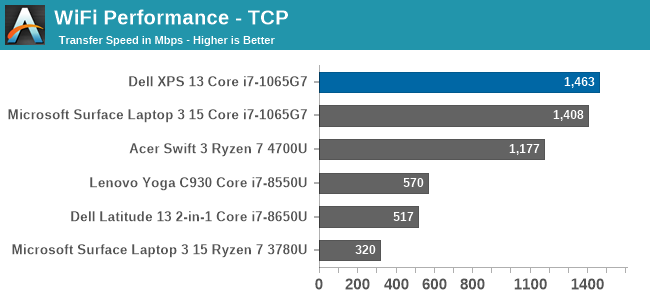
Performance is simply fantastic, and ever since Killer was able to base their network cards on Intel wireless, the stability concerns appear to be a forgotten memory. There was not a single time that the laptop had any issues with its network connection during any of the testing. That was certainly not the case on some of the older Qualcomm-based Killer products.
Audio
Dell offers Waves MaxxAudio Pro stereo speakers, at 2.5 Watts peak each, which are outfitted on the bottom of the laptops right on the edge of the device.
Sound quality is a bit on the tinny side, with not a lot of low end at all. The speaker setup does get quite loud though, with 83 dB(A) measured one inch over the trackpad at maximum volume. There was little to no distortion at peak volume either.
The dual-microphone array is found on the very top of the bezel, which would allow it to work with the device closed. It is a great way to hide the holes, with only the 2.25 mm 720p webcam showing in the bezel itself.
Thermals
Dell outfits the XPS 13 with dual fans and a single heatpipe to cool the 15-Watt Thermal Design Power of the Core processor under the hood. They have added hidden exhaust vents in the hinge, to allow more airflow without compromising the looks. There is also a layer of GORE thermal insulation under the keyboard, which helps keep that portion cool to the touch even under load.
To see how the XPS 13 performs under load, it was run at 100% for an extended period while monitoring the device.
This graph tells an interesting story, unlike most laptops we see. First, Dell has gone absolutely crazy with the PL2 level on the XPS 13, with a peak measurement of a whopping 42 Watts. But, that is not sustainable in a 13-inch laptop, and the CPU throttles in PL2 until it reaches the PL1 limit, which is right at 15 Watts in the XPS 13’s most performant mode. Most of the notebooks we have tested tend to allow a PL1 level above this, with maybe 20-21 Watts as a constant, but Dell clamps to 15 Watts, then spikes back up when the thermals allow, so we see this see-saw effect of the device running between 15 and 30 Watts. This is similar to how the XPS 13 2-in-1 behaved, and it would be nice to see the company address this with a more consistent power delivery under sustained load.
Over the duration of the test, the device averaged 18 Watts of draw, with an average CPU temperature of 80°C, with the four cores running at 2100 MHz. During this extended run, the noise level was very restrained, only hitting around 44 dB(A) measured about one inch over the trackpad. The GORE thermal insulation also did its job, with the keyboard deck remaining cool.
Software
Dell’s included software suite is a very polished set of applications, allowing the user to quickly get the device set up, adjusted, and of course, contact support. As with most manufacturers, they include a utility to get the latest updates, called Dell Update, and that includes some maintenance utilities as well.
Dell’s Power Manager software allows you to change the power profile, as well as adjust the battery charging. The Thermal Management tab allows you to pick a fan and CPU profile, or leave it as the default Optimzed setting which works well for most scenarios.
Dell offers a plethora of battery options to maintain and extend the life of the battery. Out of the box, it comes in an “Adaptive” setting which learns your usage patterns and tries to keep the battery at a good state of charge, but you can override that to keep the battery always at 100% charge in case you need it, or if you mostly use it on AC you can set it to keep the battery to a lower level of charge to prolong its life.
The days of laptops being saddles with an almost unending array of shareware and trial software seem to be mostly over, and even though Dell included Norton with the XPS 13, it can easily be removed if necessary.


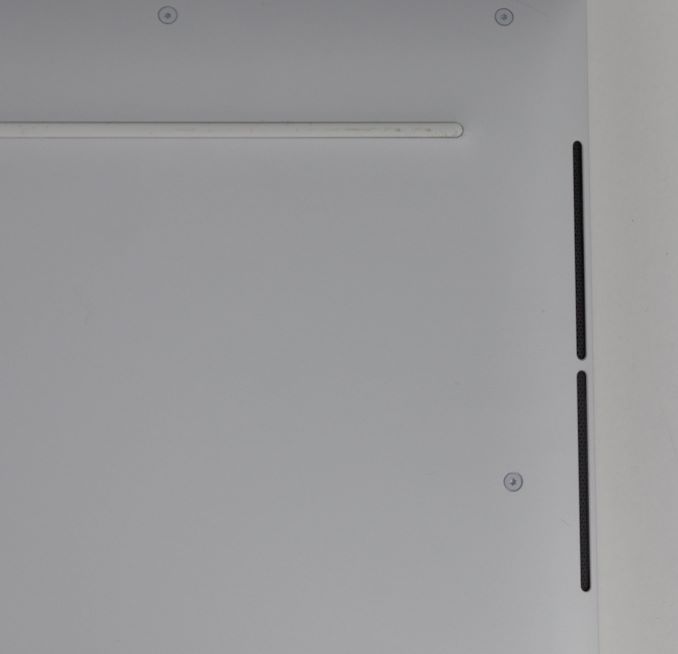
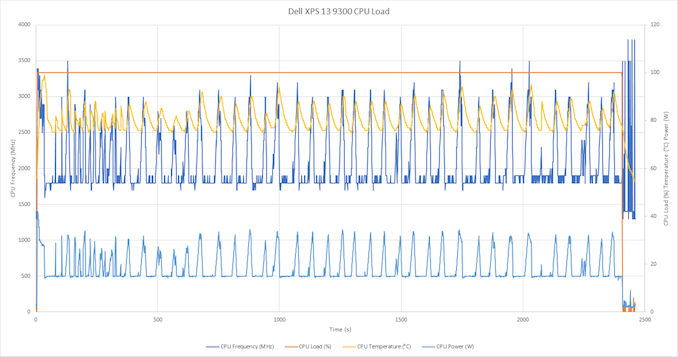
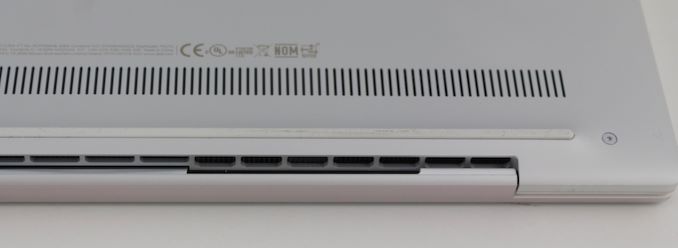

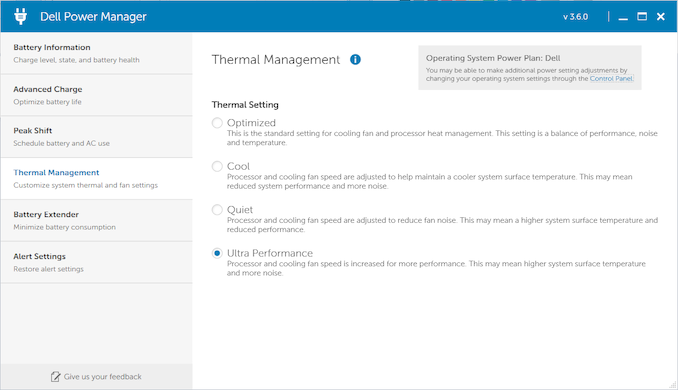
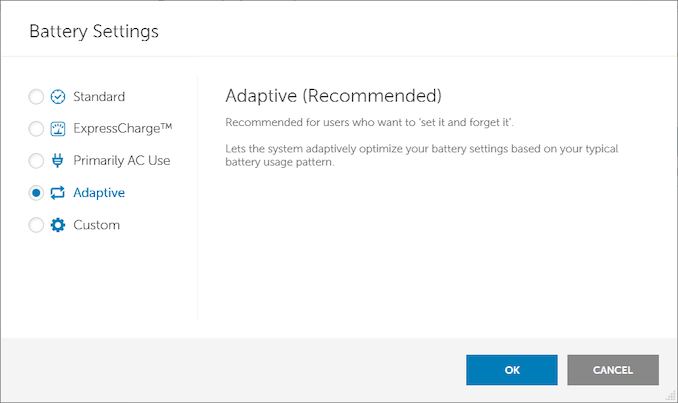








224 Comments
View All Comments
Gigaplex - Sunday, July 19, 2020 - link
I'm a programmer, but I rarely use the laptop keyboard. I plug it into a dock and use a desktop keyboard.TEAMSWITCHER - Sunday, July 19, 2020 - link
So .. you agree with me?mjz_5 - Friday, July 17, 2020 - link
I hope they fixed the Bluetooth. I can’t move three feet away when trying to listen to music on my 2016 XPS 13”. Same headphone on my iPhone, I can go all over the house.Tunnah - Friday, July 17, 2020 - link
I used to say "unless it's Intel I'm not gonna bother", am now just realising with the latest AMD mobile chipsets, I've firmly swung in the other direction. It feels almost daft to go with Intel nowadays considering what AMD are putting out. I'd love one of these with new Ryzen in itisthisavailable - Friday, July 17, 2020 - link
This "king" is overrated. Surface Laptop is miles better at a lower price. The i3 and i5 versions of xps are useless because they are G1. 4gb ram version is, again, useless. It's not even a $1000 laptop.hanselltc - Friday, July 17, 2020 - link
The lack of Ryzen here means there are sub 600 dollar laptops running laps around this when any resemblance of stress is present. Makes this a lot less attractive.Deders - Friday, July 17, 2020 - link
Not sure why people still say windows 10 still handles HDR poorly, have they tried it since the HDR update? Apps look fine to me, everything looks fantastic (if a little bright)trenzterra - Friday, July 17, 2020 - link
I had the XPS 9300 for a couple months before deciding to sell it. There are some issues with this laptop which wasn't highlighted in this review:- The display is really bright and all, but I had issues with screen colour uniformity -- on my set, there were two vertical "bars" where the colour had a little bit of green tint to it, noticeable on white or grey backgrounds. I had my display replaced twice before getting a decent one. After the lockdown was lifted, I went to look at display units in shops and it appears many of the Full HD and 4K sets had the same issue. Perhaps it's my eyes, or maybe panel lottery is particularly bad on this laptop.
- For some reason, my microSD card kept getting stuck in the slot (slot seemed misaligned or something, causing the spring mechanism to get stuck). In the end, I had to get a replacement laptop from Dell.
- The current firmware, 1.0.11 (and the previous, 1.0.10), has issues outputting video with certain USB-C to HDMI adapters. This has been going on for two months with no fix in sight, despite bringing it up to Dell's attention: https://www.dell.com/community/XPS/XPS-13-9300-BIO... . Further, users are also reporting issues connecting to certain LG and Samsung USB-C/ TB3 monitors (issue reported at launch but no fix yet -- apparently, you need to plug a separate power cable into the laptop and then plug the LG/ Samsung monitor into the other port just to get it to work, notwithstanding that the Samsung/ LG monitors are supposed to do PD passthrough). TB3/ PD support is really buggy on the XPS 9300 at the moment, and I wonder if they will ever get it fixed.
- If you have the Fast Startup option disabled (which is essentially hibernation in a different form), or restart the laptop, the laptop takes about 1min to startup, even on a whooping fast SSD. No fix in sight despite a 10-page+ long thread on the Dell forums: https://www.dell.com/community/XPS/Bug-New-XPS-13-...
- The laptop gets hot very easily at the palmrest area. I think this is a byproduct of the carbon fibre palmrest which kinda traps heat.
Overall, I found the laptop to be of rather good build quality and very good to look at. However, the flaws and lack of after-sales support (in terms of fixing BIOS/ firmware issues) from Dell has left me somewhat disappointed and I decided to cut my losses and sold it. Now I'm holding out for Renoir options...
trenzterra - Friday, July 17, 2020 - link
To clarify on the boot times, the laptop gets stuck on the Dell "loading" logo for about 40 seconds, even on a fresh install without bloatware. It seems like a BIOS bug (where something is being stuck) more than anything else, but since Fast Startup is left enabled by default (I prefer to disable it to reduce unnecessary writes to the SSD), Dell doesn't seem keen to fix it.Spunjji - Monday, July 20, 2020 - link
These issues remind me of most of Dell's high-end releases since at least 2008. Shame :/